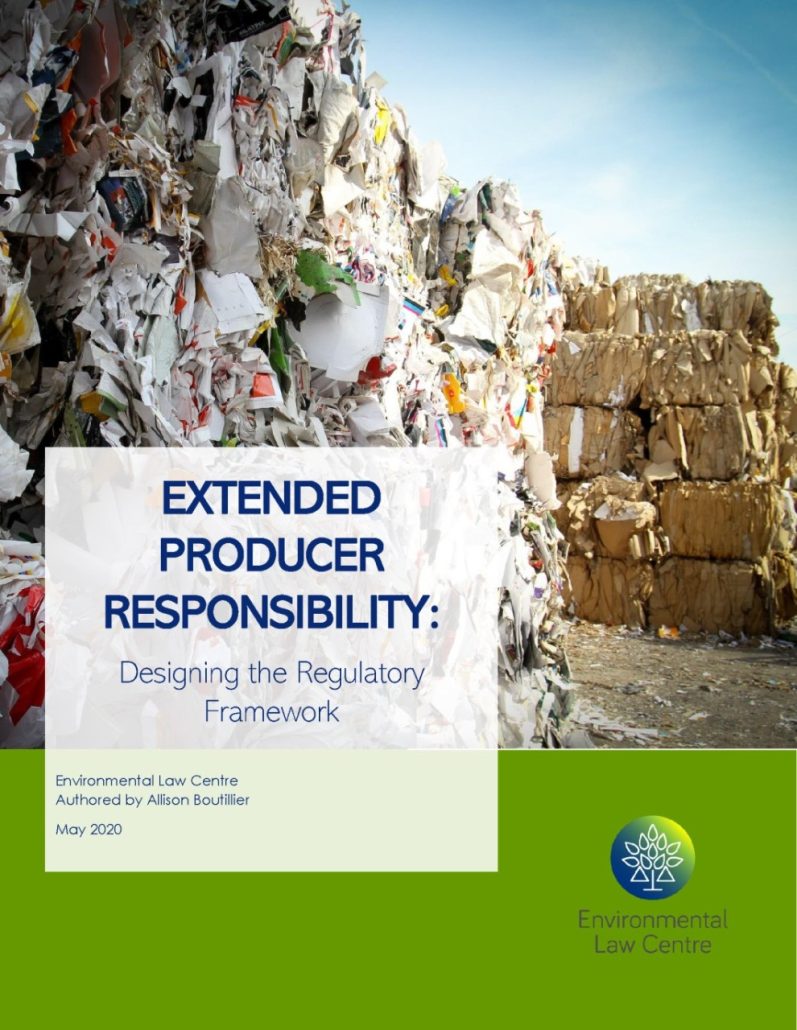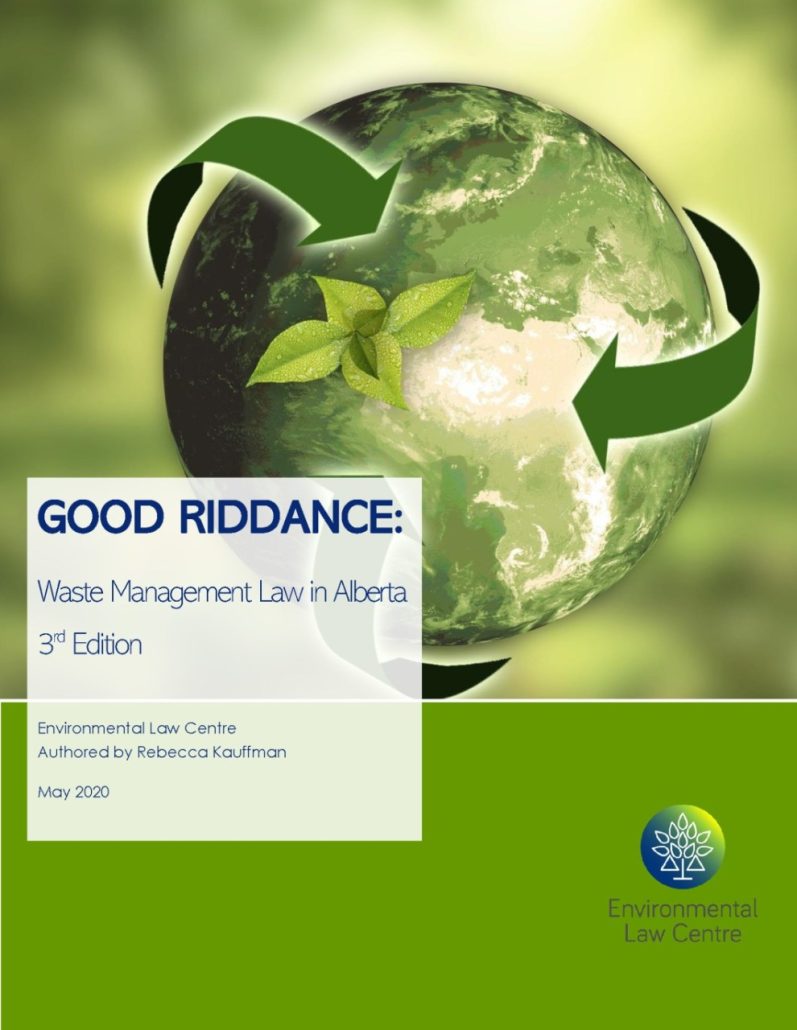Waste Management in Alberta:
ELC publishes two reports on waste management and reduction in the province
Waste management is clearly a critical part of our environmental infrastructure. This is the system that ensures the things that we throw away are properly dealt with because for most people, waste is an ‘out of sight, out of mind’ issue. In these two reports, the Environmental Law Centre (ELC) takes a closer look at waste management in the province – where we are today and where we need to go.
Download both reports here:


Extended Producer Responsibility: Designing the Regulatory Framework takes a detailed look at the extended producer responsibility [“EPR”] model of waste management and its potential to improve waste management systems in Alberta. This report outlines the concept of EPR, including its history, its objectives, the regulatory mechanisms that drive it, and the roles of various stakeholders. Additionally, the report provides a detailed discussion of the policy considerations and the regulatory framework behind a producer take-back EPR system, including a description of each essential legal element and a survey of the design choices that have been made in other provinces. Finally, the report considers if the EPR model would be appropriate for Alberta, whether as a replacement for the province’s existing waste management systems or as a tool for creating new recycling programs.
Good Riddance: Waste Management Law in Alberta is the third edition in a series of reports that ELC has released surveying the waste management system in the province. This latest report provides an update to a 2003 version to see what has changed and what hasn’t. Part 1 of the report highlights basic legal concepts and the institutions involved in waste management. Part 2 then goes on to look at some of the basic waste management laws that apply including certain important common law principles. Part 3 will then look at the law that applies to specific types of waste including: non-hazardous waste, hazardous waste, agricultural waste, biomedical waste, oilfield waste, and nuclear waste. Finally, parts 4 and 5 will look at the recycling system and how we manage the import and export of waste. Overall, this volume should be considered a primer on the waste management system in Alberta.
ABOUT THE ENVIRONMENTAL LAW CENTRE:
The Environmental Law Centre (ELC) has been seeking strong and effective environmental laws since it was founded in 1982. The ELC is dedicated to providing credible, comprehensive and objective legal information regarding natural resources, energy and environmental law, policy and regulation in Alberta. The ELC’s mission is to educate and champion for strong laws and rights so all Albertans can enjoy clean water, clean air and a healthy environment. Our vision is a society where laws secure an environment that sustains current and future generations.
As a charity, the Environmental Law Centre depends on your financial support. Help us to continue to educate and champion for strong environmental laws, through tools such as our blog and all of our other resources, so that all Albertans can enjoy a healthy environment. Your support makes a difference.
Donate online today
The ELC would like to thank the Alberta Law Foundation for its support of the ELC’s Waste and Circular Economy project.

